I saw this door in my hotel room in Indiana last month, and I immediately noticed something that I would not have specified for this application. When I posted my updated Decoded article about communicating doors earlier this week, I remembered these photos. I think that looking at an issue in different ways can really help to get the point across, so here goes…
This is the communicating door between my room and the room beside it. If you have very good eyes you might be able to spot the problem:
Just yesterday, someone asked about the multiple releasing motions needed to unlatch a communicating door – this door requires two motions to release the deadbolt and retract the latchbolt. (Note that the positive-latching hardware is required because it is a 20-minute fire door.) Because this door is not required for egress and is not provided for egress purposes, the number of releasing motions are not limited by the codes and standards, but I would make sure that the hardware doesn’t require two hands to be used simultaneously (two latches instead of a deadbolt/latch combo, for example). It’s obvious that these are not egress doors because if the neighbor’s door is closed, there is no egress for me. Here are the locks on my door, and on my neighbor’s door once my door is opened:
Here’s what I would have done differently when specifying the hardware for this opening. Two of the hinges on each door are spring hinges (pictured below), so the doors are self-closing. As I mentioned in the Decoded article, the codes and standards include an exception that allows the 20-minute fire door assemblies between hotel rooms to NOT be self-closing. And as any parent who has stayed in adjoining hotel rooms with their kids will tell you…having self-closing communicating doors is a pain. It’s highly unlikely that there is a local code requirement that overrides the exception, so I would have specified three standard hinges here.
Any questions? Would you choose different hardware for this opening?
You need to login or register to bookmark/favorite this content.

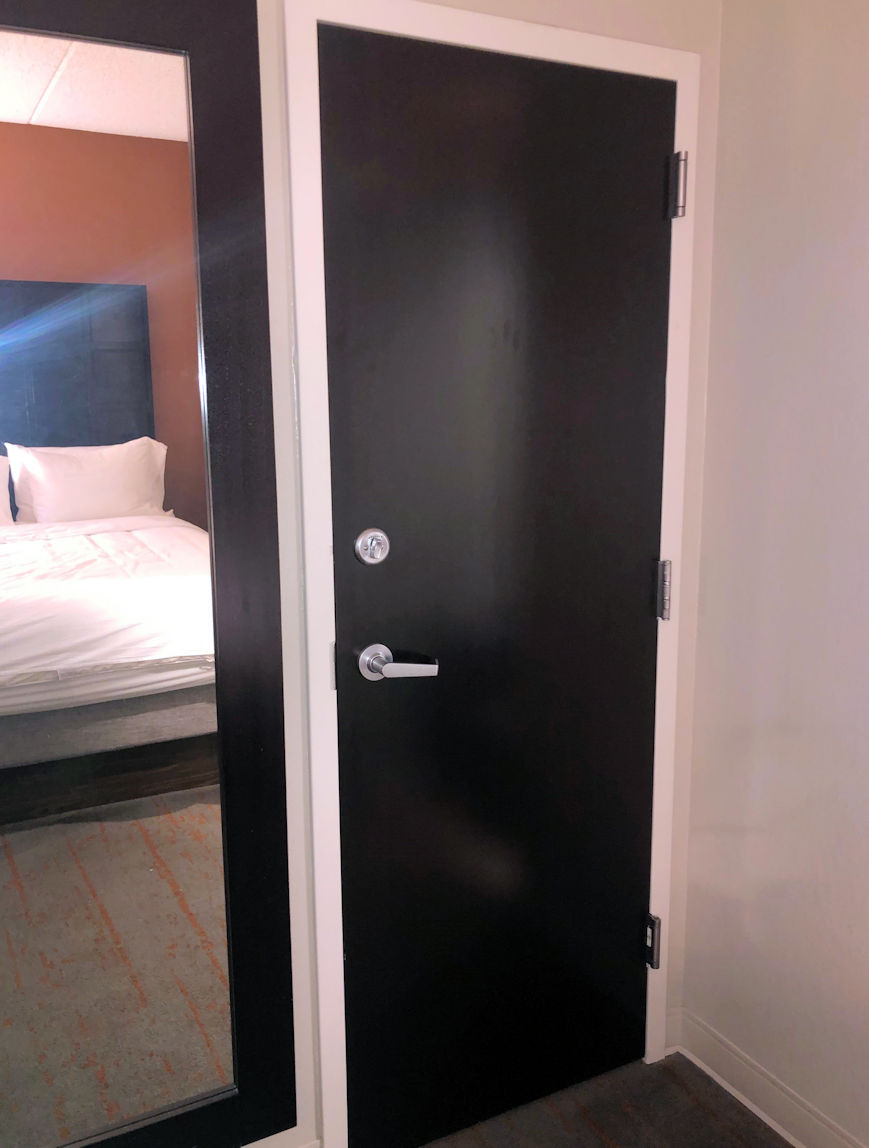
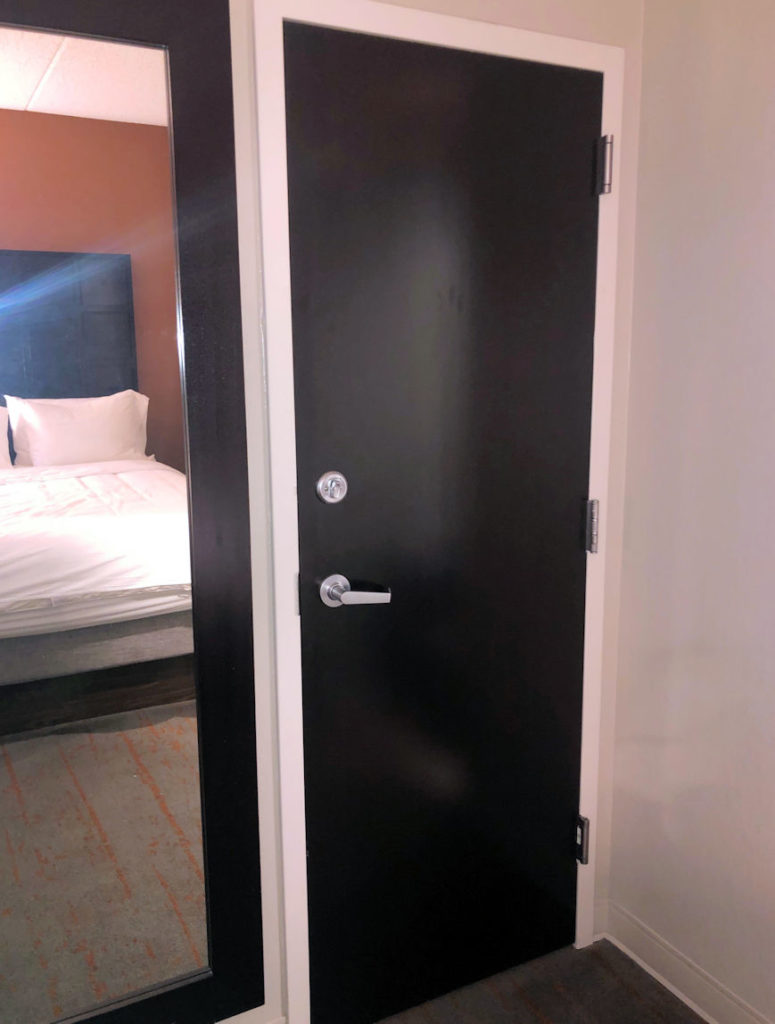
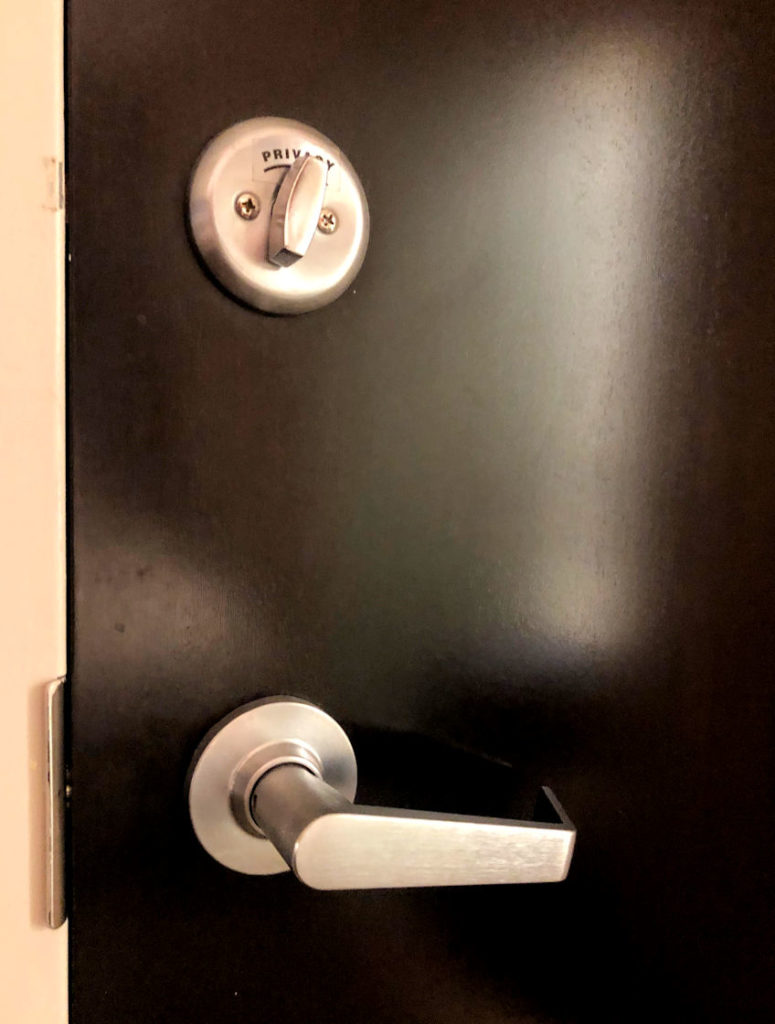
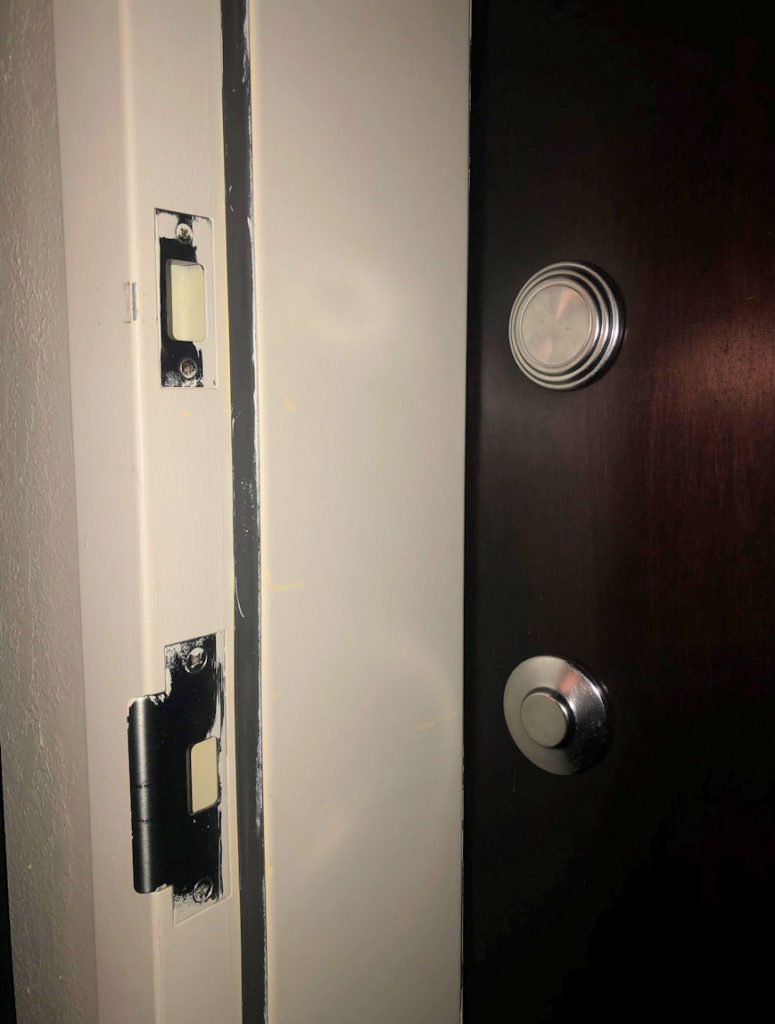
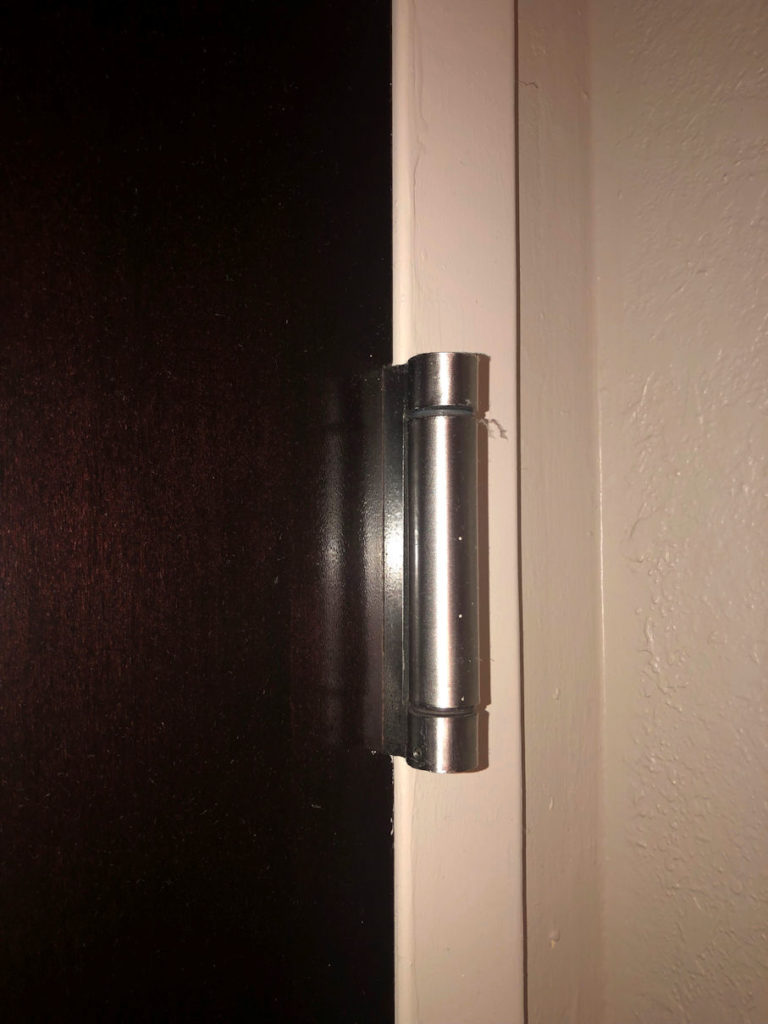
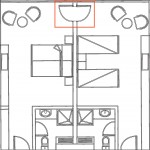
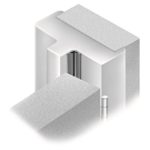

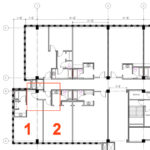




OK. I have a college residence hall where the “communicating doors” open into a common bathroom.
When two hotel rooms are connected via a communicating door, are their smoke alarms interconnected? (Same for a pair of residence hall rooms with a shared bathroom).
Good question – I don’t know! Maybe someone reading this will weigh in.
– Lori
What happens when in an emergency where the entry room door(s) get barricaded, a family have their kids in one room and parents in the other room? How can someone open both doors if someone in the other room is injured and can’t open the communicating door? Is there a hardware solution for that type of situation?
I am thinking this could happen in a school, where 2 classrooms share a communicating doors and the classrooms doors are barricaded or the user inside have to lock the classrooms? how the two rooms get access to each other but remain locked in normal operations?
Beatrice, first of all, good question.
The hotel room and the classroom situations are two different occupancy types and as so are treat differently. The communicating door in a hotel room is actually two separate doors. Due to the wall and frame condition, typically there is not enough room between the doors to allow for any sort of operating trim on the “outside” of the individual doors that make up the assembly. So, I’m assuming in the hotel situation that some sort of physical force would be needed to enter the room if the main door was barricaded.
The door between classrooms is usually there for convenience, where the age of the student may require more supervision. If one teacher steps away, they can open the door so that the neighboring teacher can watch the students. This door assembly is made up of one single door and typically is a non-locking function. so that the adjoining rooms are only locked by the door leading into the main corridor.
I hope this answered your question. 🙂
-Mark